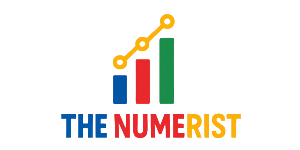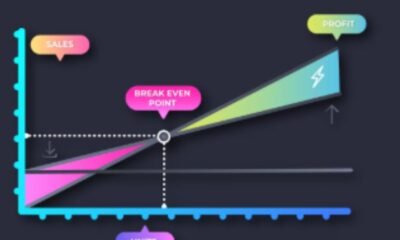BLOG
Alexander Farmiga: The Quiet Strength Behind the Spotlight

Alexander Farmiga: The Quiet Strength Behind the Spotlight
In a world obsessed with celebrity, some names remain enigmatically in the background—known only by association but respected for their deliberate privacy. Alexander Farmiga: The Quiet Strength Behind the Spotlight is one such name. While his sisters, Vera and Taissa Farmiga, have earned acclaim in Hollywood for their captivating performances in films and TV shows, Alexander has chosen a life far removed from red carpets and flashing cameras. Though he may not be a public figure, his presence in the Farmiga family narrative adds depth and grounding to a lineage steeped in both artistic brilliance and cultural tradition.
A Deeply Rooted Family History
The Farmiga family story is one of resilience, heritage, and artistic evolution. Born to Ukrainian-American parents in Clifton, New Jersey, Alexander Farmiga grew up in a household that was both culturally rich and firmly grounded. His mother, Lubomyra “Luba” Farmiga, was a schoolteacher, while his father, Michael Farmiga, worked as a systems analyst. The couple instilled in their children a strong sense of identity, often emphasizing their Ukrainian roots, language, and traditions.
Alexander is one of seven siblings, part of a close-knit family that navigated the immigrant experience with strength and unity. Ukrainian customs—ranging from food to festivals and faith—played an integral role in their upbringing. While Vera and Taissa would go on to become household names in the entertainment industry, the foundation of their values and discipline was undoubtedly influenced by their siblings, including Alexander, who embodied steadiness and support.
Choosing Life Outside the Limelight
What sets Alexander apart is not only his decision to remain outside of public view but his consistency in maintaining that boundary. In an age where almost everyone is a click away from fame via social media, his lack of an online footprint is both rare and admirable. There are no Instagram selfies, no viral TikTok clips, no celebrity interviews—just respectful silence.
And yet, this absence does not suggest insignificance. On the contrary, Alexander’s low profile often invites curiosity. What does he do professionally? What are his interests? Has he ever been tempted by the entertainment industry? While definitive answers are scarce, this mystery only heightens public intrigue and underscores the power of intentional privacy.
The Role of Siblings in Shaping Stars
It’s often said that a strong family background helps individuals stay balanced amid success, and the Farmiga family is a testament to that. Alexander’s siblings, particularly Vera and Taissa, have both emphasized the importance of their roots. Whether it’s Vera’s stunning turn in The Conjuring series or Taissa’s haunting performance in American Horror Story, both sisters exude depth that likely stems from their upbringing and familial support.
His life, though less documented, forms part of the unshakeable foundation from which the Farmiga sisters have built their careers. In a sense, his contribution to the family’s public success is no less significant simply because it lacks a spotlight.
Cultural Identity and Personal Grounding
The Farmiga family’s Ukrainian-American identity is more than a footnote—it’s a key element of who they are. Raised speaking Ukrainian and attending Ukrainian Catholic churches, the children were immersed in a culture that prizes resilience, family, and community. These values have visibly shaped Vera and Taissa’s work ethic and humility, and by extension, reflect the kind of upbringing Alexander also experienced.
Living in a culturally rich yet modest household in suburban New Jersey, Alexander had the advantage of being raised in an environment that encouraged both introspection and expression. While his siblings turned that expression outward into the arts, his inward orientation might have led him to a quieter but equally meaningful life.
There’s something powerful about choosing not to participate in fame while surrounded by it. This choice doesn’t imply disinterest but rather demonstrates a strong sense of self-awareness and confidence in one’s life path. That’s the core of Alexander’s quiet strength—he knows who he is, and he doesn’t need public approval to validate it.
Privacy in a Digital Age
In the current landscape of viral content and celebrity culture, maintaining true privacy is an extraordinary feat. For someone linked to celebrities of Vera and Taissa Farmiga’s stature, staying out of the spotlight requires intentional effort. Alexander Farmiga exemplifies how boundaries can be respected and maintained when rooted in personal conviction.
This decision, though subtle, sends a powerful message about the value of personal space, digital detachment, and the freedom to live without constant scrutiny. It reminds us that while fame may be appealing, peace and authenticity hold their own unique appeal—especially when cultivated through grounded living and meaningful relationships.
FAQs About Alexander Farmiga
Q1: Who is Alexander Farmiga?
Alexander Farmiga is the brother of actresses Vera Farmiga and Taissa Farmiga. He is part of a large Ukrainian-American family but leads a private life away from the public eye.
Q2: Is Alexander Farmiga involved in the entertainment industry?
There is no public record of Alexander working in film or television. Unlike his sisters, he has chosen a private life outside of show business.
Q3: How is Alexander Farmiga related to Vera and Taissa?
He is their brother. Vera Farmiga is the second oldest sibling, and Taissa is the youngest.
Q4: What is known about Alexander’s career?
Details about his professional life are not publicly available, reinforcing his preference for privacy.
Q5: Does Alexander Farmiga appear on social media?
No, he does not have a verified public presence on platforms like Instagram, Twitter, or Facebook.
Q6: Where is the Farmiga family from?
The family is based in Clifton, New Jersey, and has Ukrainian heritage.
Conclusion
Alexander Farmiga: The Quiet Strength Behind the Spotlight is more than just a title—it’s a truth. In a family blessed with artistic fame and public attention, Alexander serves as a grounding force, embodying the strength that often goes unnoticed but is felt profoundly

BLOG
Besos Meaning: A Journey into the Heart of Latin American Culture

Besos is derived from the Spanish language, where it translates to “kisses.” However, the meaning of besos goes beyond a simple translation. It’s a term that encompasses a range of emotions, from affection and love to passion and intimacy.
The Cultural Significance of Besos
In many Latin American cultures, besos are an integral part of daily life. They’re a way to show affection, greet one another, and express love. The cultural significance of besos is deeply rooted in the values of warmth, hospitality, and closeness.

The Different Types of Besos
While the term “besos” is often associated with romantic love, it’s not the only context in which it’s used. Besos can be exchanged between family members, friends, and even as a greeting or farewell.
- A beso on the cheek is a common greeting in many Latin American countries.
- A beso on the lips is often reserved for romantic partners or loved ones.
- A beso on the forehead or hand can be a sign of respect, affection, or blessing.
“I remember my abuela giving me besos on the forehead every night before bed. It was a special moment that made me feel loved and safe.”
The Emotional Significance of Besos
Besos are more than just a physical gesture; they’re a way to convey emotions and connect with others. The act of giving or receiving a beso can evoke feelings of comfort, security, and love.
FAQs
Q: What is the meaning of besos in Spanish?
A: Besos is the Spanish word for “kisses.” It’s a term used to describe a range of affectionate gestures, from romantic kisses to friendly pecks on the cheek.
Q: How do you use besos in a sentence?
A: You can use besos in a sentence to express affection or love, such as “Dale besos a tu familia de mi parte” (Give your family a kiss from me).
Q: What is the cultural significance of besos in Latin America?
A: Besos play a significant role in Latin American culture, where they’re used to show affection, greet one another, and express love.
Q: Can besos be used in non-romantic contexts?
A: Yes, besos can be used in non-romantic contexts, such as between family members or friends. It’s a way to show affection and closeness.
Conclusion
Besos, we discover that it’s more than just a word – it’s a way to connect with others and express our emotions. Whether you’re looking to deepen your understanding of Latin American culture or simply want to show affection to those around you, besos is a term that’s worth exploring further.
BLOG
Luxury Cruise Passengers: Staying Safe on the High Seas

Luxury cruises often traverse through exotic waters, some of which are notorious for piracy. The Gulf of Aden, the Indian Ocean, and parts of Southeast Asia are known hotspots where pirates have been active. These areas are often near popular cruise routes, putting luxury cruise passengers at risk.
Piracy Tactics: How Pirates Target Luxury Cruises
Pirates have become increasingly sophisticated, using tactics like GPS spoofing and fake ship identities to target unsuspecting vessels. They often look for easy prey, such as slow-moving ships or those with lax security. Luxury cruises, with their high-value passengers and cargo, can be attractive targets.
The Human Impact: Stories from Luxury Cruise Passengers
“I was on a luxury cruise in the Gulf of Aden when we received a piracy warning. The crew immediately took action, increasing security measures and altering our course. It was a harrowing experience, but thanks to their quick response, we were safe.” The fear and uncertainty that come with a piracy warning can be unsettling, but being prepared and knowing what to expect can make all the difference.
Staying Safe: Precautions and Measures for Luxury Cruise Passengers
To minimize the risk of piracy, luxury cruise lines have implemented various security measures. These include:
- Traveling in convoys or with naval escorts
- Implementing advanced security systems, such as radar and surveillance cameras
- Conducting regular security drills and training for crew members
- Increasing security personnel on board

What Luxury Cruise Passengers Can Do
While cruise lines take necessary precautions, passengers can also play a role in staying safe. Being aware of the risks and taking simple precautions, such as staying informed about piracy hotspots and following crew instructions, can help minimize the risk of piracy.
Piracy Warning Systems: How Luxury Cruises Stay Ahead
Luxury cruise lines use advanced piracy warning systems to stay informed about potential threats. These systems provide real-time updates on piracy hotspots and suspicious activity, enabling crews to take proactive measures to avoid danger.
The Role of Technology in Piracy Prevention
Technology plays a vital role in preventing piracy. Advanced systems, such as satellite tracking and AI-powered surveillance, help cruise lines stay one step ahead of pirates. These technologies enable crews to respond quickly and effectively in the event of a piracy warning.
FAQs
Q: What should I do if I receive a piracy warning on my luxury cruise?
A: If you receive a piracy warning, follow the instructions of your crew immediately. They are trained to handle such situations and will take necessary precautions to ensure your safety.
Q: Are luxury cruises more vulnerable to piracy than other types of cruises?
A: Luxury cruises can be attractive targets for pirates due to their high-value passengers and cargo. However, luxury cruise lines often have advanced security measures in place to minimize the risk.
Q: How can I stay informed about piracy hotspots and safety measures on my luxury cruise?
A: Your cruise line will provide you with information about piracy hotspots and safety measures in place. You can also stay informed through government travel advisories and industry reports.
Q: Can I travel safely on a luxury cruise despite the risk of piracy?
A: Yes, with the right precautions and awareness, you can travel safely on a luxury cruise. Cruise lines take piracy seriously and have measures in place to protect passengers.
Conclusion
Luxury cruise, staying informed about piracy risks and taking necessary precautions can help ensure a safe and enjoyable journey. By understanding the risks and being aware of the measures in place to prevent piracy, you can relax and enjoy your time on board.
BLOG
Mandarin for Mandarin: Tips and Tricks for Language Learners

Mandarin can be a rewarding and enriching experience, especially when you focus on learning Mandarin for Mandarin. By doing so, you can:
- Improve your pronunciation and intonation
- Develop a deeper understanding of Chinese culture and history
- Enhance your career opportunities in China or with Chinese companies
Immersing Yourself in the Language
One of the most effective ways to learn Mandarin for Mandarin is to immerse yourself in the language. This can be done by:
- Watching Chinese movies and TV shows
- Listening to Chinese music and podcasts
- Speaking with native Mandarin speakers
For example, “I started watching Chinese dramas with English subtitles and it really helped me improve my listening skills and get used to the natural flow of the language.”

Tips for Learning Mandarin for Mandarin
When it comes to learning Mandarin for Mandarin, there are several tips to keep in mind:
- Focus on tones and pronunciation
- Practice speaking and listening regularly
- Use language learning apps and resources
Using Language Learning Apps
There are many language learning apps available that can help you learn Mandarin for Mandarin. Some popular options include:
- Duolingo
- HelloTalk
- Pleco
FAQs
Q: What is the best way to learn Mandarin for Mandarin?
A: The best way to learn Mandarin for Mandarin is to immerse yourself in the language by watching Chinese media, speaking with native speakers, and practicing regularly.
Q: How can I improve my Mandarin pronunciation?
A: You can improve your Mandarin pronunciation by listening to native speakers, practicing speaking regularly, and using language learning apps that focus on pronunciation.
Q: What are some common challenges when learning Mandarin for Mandarin?
A: Some common challenges include mastering tones, understanding grammar and syntax, and finding opportunities to practice speaking and listening.
Q: Can I learn Mandarin for Mandarin on my own?
A: Yes, you can learn Mandarin for Mandarin on your own with the right resources and motivation. However, it’s also helpful to work with a language exchange partner or tutor to get feedback and support.
Conclusion
Mandarin for Mandarin requires dedication, persistence, and the right resources. By immersing yourself in the language, practicing regularly, and using the right language learning tools, you can achieve fluency and unlock new opportunities. Whether you’re a beginner or advanced learner, there’s always room to improve and refine your Mandarin skills.
-

 TECH6 months ago
TECH6 months agoApple iPhone 17: Official 2025 Release Date Revealed
-

 BLOG6 months ago
BLOG6 months agoUnderstanding the ∴ Symbol in Math
-

 EDUCATION6 months ago
EDUCATION6 months agoHorizontal Translation: How to Shift Graphs
-

 EDUCATION6 months ago
EDUCATION6 months agoUsing the Quadratic Formula
-

 EDUCATION6 months ago
EDUCATION6 months agoThe Meaning of an Open Circle in Math Explained
-

 HEALTH6 months ago
HEALTH6 months agoGoodNever: Wellness, Simplified
-

 EDUCATION6 months ago
EDUCATION6 months agoWhy Does m Represent Slope?
-

 EDUCATION6 months ago
EDUCATION6 months agoHow to Solve Quadratic Equations 2